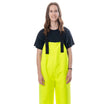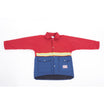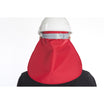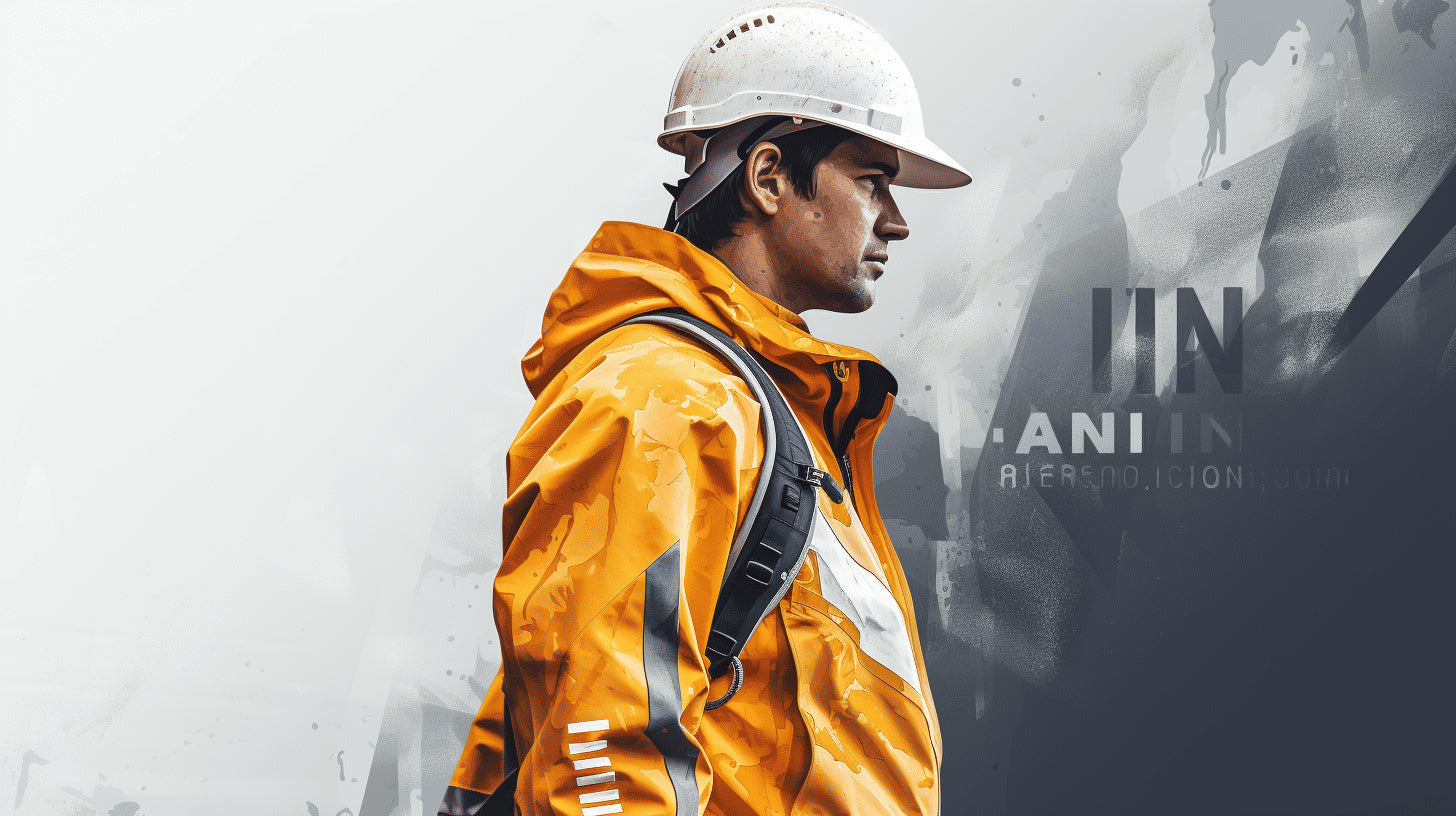Importance of Rain Gear for Construction Workers
When you imagine construction workers going about their daily jobs, it's not uncommon to picture them in helmets, sturdy work boots, and safety harnesses. One aspect often overlooked, however, is the significance of rain gear. Rain can present a number of challenges on a construction site, making waterproof clothing an essential part of any construction worker’s wardrobe.
Rain gear provides workers with three primary benefits:
-
Protection from Wet and Rainy Conditions
Rain gear keeps workers dry during inclement weather. This is crucial for both comfort and productivity. Imagine trying to operate heavy machinery or hand tools while soaked to the bone; these conditions are not only uncomfortable but can also hinder a worker's efficiency. -
Preservation of Worker Comfort and Safety
Apart from keeping workers dry, rain gear also helps maintain their overall comfort and safety. Sweat-wicking materials can prevent chafing and skin irritation. High visibility elements in the gear can ensure that workers are clearly visible, reducing the risk of accidents in poor light conditions. -
Prevention of Water-Related Accidents and Health Issues
Water on construction sites can create slippery conditions, raising the possibility of accidents. High-quality rain gear can come with features like non-slip soles on boots, keeping workers safe. Additionally, constant exposure to rain without proper protection can lead to various health issues like colds and hypothermia. Rain gear defends against these health risks.
"Protection is always better than cure. High-quality rain gear might seem like a big investment up front, but when you consider the costs of potential accidents, health issues, or lost productivity due to discomfort, it's a small price to pay," says a veteran construction site manager.
To sum up, rain gear is an important safety measure for construction workers, aside from their helmets, harnesses, and work boots. Considering the unpredictable nature of weather, investing in high-quality rain gear should be a priority for all construction companies wanting to uphold the utmost safety and comfort for their workers.
Key Features to Consider in Rain Gear
If you're someone who doesn't let the rain dictate your outdoor activities, you're fully aware of the importance of having proper rain gear. Choosing just any waterproof jacket or pants, however, isn’t enough to ensure you remain dry and comfortable throughout your adventure. It’s necessary to take into account certain key features, some of which may not be top of your mind when shopping. So what are these features you should consider when choosing your rain gear? You’ll find them in our comprehensive guide below.
Waterproof Material
The first attribute, and possibly the most crucial, is the material's waterproof quality. Rain gear made from a waterproof material ensures that water slides off the surface, keeping you dry - be it during a drizzle or a heavy downpour. Materials such as Gore-Tex and nylon are known for their excellent waterproofing abilities, but bear in mind that their effectiveness can decrease over time and after frequent washing if not appropriately maintained. Always check the product's washing instructions to maintain its optimal performance.
Tear-Resistant Design
You may think that all waterproof clothes are created equal, but that’s far from the truth. When it comes to durability, you'll want to prioritize a tear-resistant design. This is especially important for those partaking in activities that can lead to potential snags or tears, such as hiking, or even walking through a wooded area with overgrowth. Kevlar and other similar heavy-duty materials are famous for their tear-resistant ability and should be at the top of your list when shopping for durable rain gear.
Breathability
Anyone who has worn a cheap rain poncho knows the uncomfortable feeling of being trapped in your own heat without proper ventilation – this is where breathability comes into play. High-quality rain gear allows sweat to evaporate from inside while keeping rain from penetrating from the outside. Remember, finding the right balance between waterproofing and breathability is important for overall comfort.
High Visibility
Weather conditions during rain could limit visibility. Therefore, opting for rain gear in high-visibility colors or reflective elements can enhance your safety, especially if you engage in pursuits like running or cycling on roads. Safety should never be compromised, even in your quest for dryness and comfort.
Comfortable Fit
Last but not least, your rain gear should give you a comfortable fit. This doesn't only mean it should not be too loose or tight; it should also allow enough flexibility for you to freely perform your activities. Look for features such as adjustable hoods, cuffs, and waistbands to get the perfect fit.
Choosing rain gear involves more than just grabbing the first waterproof item off the rack. By paying attention to these five key features, you can ensure you're well suited up for an uninterrupted adventure, come rain or shine!
Recommended Rain Gear Options
When Mother Nature decides that rainfall is on the day's agenda, it pays to be prepared. Imagine being stuck in the downpour, with your clothes sticking to you, your feet squelching uncomfortably in soaked shoes. Quite a damp dampener to any day's spirit, isn't it? That's precisely why you need reliable rain gear. But not all items labeled "waterproof" deliver on their promise. This is why we've curated a selection of proven weather-resistant items from well-established brands that assure you stay dry when the skies open up.
Waterproof Jackets
Certainly the first thing that springs to mind when thinking of rain gear, waterproof jackets are a rain-swept essential. The ideal waterproof jacket not only keeps the rain off your back but also offers good breathability. For instance, jackets from trusted brands like The North Face and Columbia come with special lining that allows moisture to escape instead of trapping sweat inside. This way, you stay comfortably dry, inside out!
Tear-Resistant Pants
Don't let the rain stop your love for adventure. With tear-resistant pants, you can forge ahead in your explorations all year round. Brands like Patagonia and Arc'Teryx offer a line of durable, waterproof pants designed to resist tears from thorny bushes or jagged rocks, ensuring longevity while keeping you dry. The pants are also designed to be flexible, allowing freedom of movement while maintaining their all-important rainproof attribute.
Waterproof Boots
Waterlogged shoes can make even the shortest walks feel like an endless, miserable slog. Waterproof boots like those from Timberland and Merrell are engineered to keep your feet dry and snug. Sporting sealed seams and waterproof leather, these boots are designed to stand up to even the most determined downpour while offering excellent comfort and durability.
Waterproof Gloves
Nothing can be more uncomfortable than cold, wet hands. Waterproof gloves, like those from Outdoor Research or Black Diamond, are a must-have for chilly, wet days. Made from waterproof materials and insulated for warmth, these gloves keep hands dry and cozy even when the weather threatens otherwise.
Waterproof Hats
Last but not least, waterproof hats! To keep the rain from streaming down your face, you might want to consider a waterproof hat. Brands like Tilley and Brixton offer stylish, waterproof hats that not only keep your head and face dry but also add a dash of style to your rain gear ensemble.
Surely, no rain should get in the way of your day. With the right rain gear, you can face any downpour with confidence. Remember: staying dry isn't just about personal comfort but also about safety — so choose your rain gear wisely!
Proper Care and Maintenance of Rain Gear
Rainy days are as unpredictable as they come, and while they can add a sense of serenity to your day, they can also throw your plans into disarray, especially if you haven't got suitably prepared gear. A trusty raincoat, waterproof boots, or other rain gear can be your savior. However, these special items require more tender loving care than your average clothing item to sustain their efficacy and lifespan. This article will guide you through the essential care and maintenance routine for your rain gear.
Cleaning Instructions for Rain Gear
- Avoid Traditional Detergents: Regular detergents can impair the water-shedding properties of your waterproof items; therefore, it's best to opt for a specialized cleaner designed for outdoor gear.
- Handwash or Gentle Cycle: The fragile nature of rain gear calls for it to be washed lightly. Either hand wash the items or use a machine's gentle cycle.
- Air Dry: Exposing your rain gear to high heat, like that from a dryer, can damage it. It's suggested to let the gear air-dry, and only use tumble-dry on a low heat setting if necessary.
Storage Tips to Prolong the Lifespan
- Clean Before Storing: Dirt, sweat, or other foreign substances can degrade the fabric over time. Always ensure your gear is clean before you put it away for storage.
- Avoid Folding: Creases cause stress to the waterproof coating, leading to cracks. The recommended way to store your gear is to hang it up.
- Keep Away from Heat and Sunlight: Heat can affect the gear's waterproof coating, while sunlight can lead to color fading. Store your rain gear in a cool, dark place.
Remember: Proper maintenance is crucial for the longevity of your gear. Treat them with care, and they'll keep you dry for years to come.
In essence, rain gear is your rainy day's best friend, but it also needs some love to stay effective. By following these steps, you can ensure that your rain gear will always be ready to protect you when the rain comes pouring down.
Rain Safety Tips for Construction Sites
Rain can be a major hindrance to construction works, sometimes leading to hazardous conditions or work stoppages. It's vital to implement rain safety tips on construction sites to ensure that your team remains safe and that your project proceeds on schedule regardless of the weather. Handling rain effectively can also help prevent project delays and additional costs.
Create a Weather Monitoring System
Establishing a weather monitoring system is the first crucial step towards ensuring safety on a construction site during the rainy season. This effectively allows workers to prepare and act accordingly at the first sign of rain.
The monitoring system should include:
- Regular weather updates
- Personalized alerts for significant changes
- Details about severity and possible rain-related risks
Advanced warning can help your team take necessary precautions and stay one step ahead of any potential hazards.
Train Workers on Rain Safety Practices
Proper training is paramount to ensure that all members of your team know how to handle themselves during a downpour.
Training on rain safety practices should include:
- How to identify and avoid potential hazards
- Correct usage of rain-resistant gear
- The importance of eye contact and communication during rain
Awareness coupled with action can significantly mitigate the risks associated with work in rainy conditions.
Provide Proper Drying Facilities
Wet clothing can hinder movement and lead to discomfort or even hypothermia. Providing proper drying facilities helps workers dry their rain gear and clothing to stay comfortable and productive. These can include heated lockers and drying rooms equipped with fans or heaters.
Ensure Slip-Resistant Surfaces
Rain can make surfaces slippery, increasing the odds of slips and falls — both of which are common injuries at construction sites.
Elements to ensure slip-resistant surfaces should include:
- Applying anti-slip coatings
- Using materials with inherently slip-resistant properties
- Regular maintenance to keep surfaces dry and safe
Implement Fall Protection Measures
When rain makes construction sites more slippery, it's even more important to implement fall protection measures. Such measures can include proper guardrails, safety nets, and harnesses. Safety training should also involve fall protection — a well-trained worker is less likely to encounter a fall hazard.
For additional information on any of the above safety tips, and for access to relevant safety guidelines and regulations, visit this website. Prioritizing rain safety can ensure the construction process continues smoothly, no matter the weather.
Conclusion
Navigating severe weather conditions can be a daunting task when working on the field. But with the right rain gear and safety measures, we can turn the tide in our favor. Quality rain gear is not a luxury for construction workers, it's a necessity. The best rain gear is one that manages to strike a balance between waterproof capability, tear-resistance, breathability, visibility, and comfort.
Always remember, a well-prepared worker is a safe worker. Overlooking the proper care and maintenance of your rain gear can degrade its performance over time. So ensure you're regularly inspecting, cleaning, and storing your gear correctly.
Learning about rain safety practices and implementing them on construction sites is the key to maximizing worker productivity and minimizing weather-related hazards. Creating weather monitoring systems, providing sufficient drying facilities, ensuring that surfaces are slip-resistant, and implementing ample fall protection measures are just a few critical steps toward a safer work environment during the rainy season.
When it comes to providing reliable and quality rain gear, Hurricane Raingear stands at the top. All of our products, from jackets to pants, boots, gloves, and hats are fashioned to keep you stay dry and safe during adverse weather conditions. Just remember, when it comes to rain safety, we've got you covered.
Here's to staying dry, staying safe, and to never allowing the weather to hamper our determination to build and create!
Frequently Asked Questions
-
What are the top brands for waterproof rain gear for construction workers?
Some of the top brands for waterproof rain gear for construction workers include Carhartt, Columbia, Helly Hansen, Marmot, and The North Face.
-
What materials should I look for in rain gear to ensure it is tear-resistant?
When looking for tear-resistant rain gear, consider materials such as ripstop nylon, polyester, or reinforced fabric with additional protective layers. These materials are durable and designed to withstand rough conditions.
-
Are there specific features I should consider when purchasing rain gear for construction work?
Yes, some important features to consider include waterproof and breathability ratings, reinforced seams, adjustable cuffs and hems, reflective elements for visibility, multiple pockets for storage, and ergonomic designs for comfort and freedom of movement.
-
How do I choose the right size for rain gear?
To choose the right size for rain gear, refer to the manufacturer's size chart and take accurate measurements of your chest, waist, hips, inseam, and arm length. It's important to ensure a proper fit for comfort and ease of movement.
-
Can I wash waterproof rain gear in a washing machine?
Most waterproof rain gear can be washed in a machine, but it's important to follow the manufacturer's instructions. Use mild detergents, avoid fabric softeners, and opt for a gentle cycle with cold water. Hang drying is typically recommended.





















Leave a comment
This site is protected by hCaptcha and the hCaptcha Privacy Policy and Terms of Service apply.